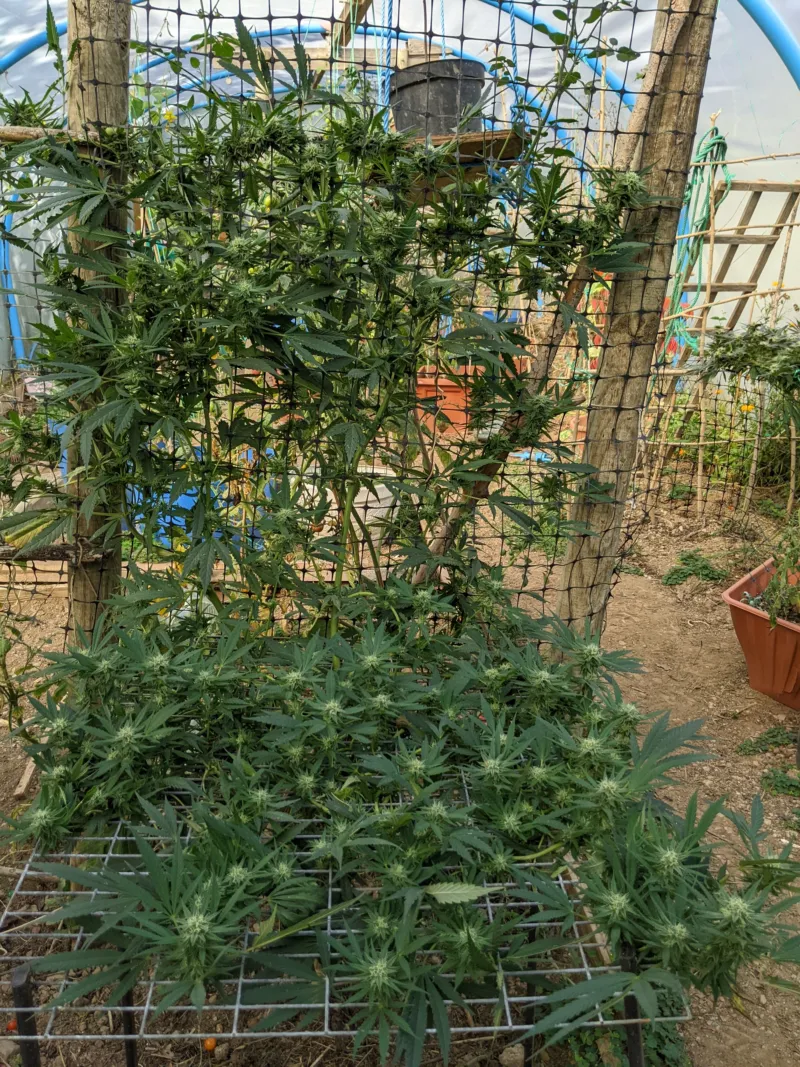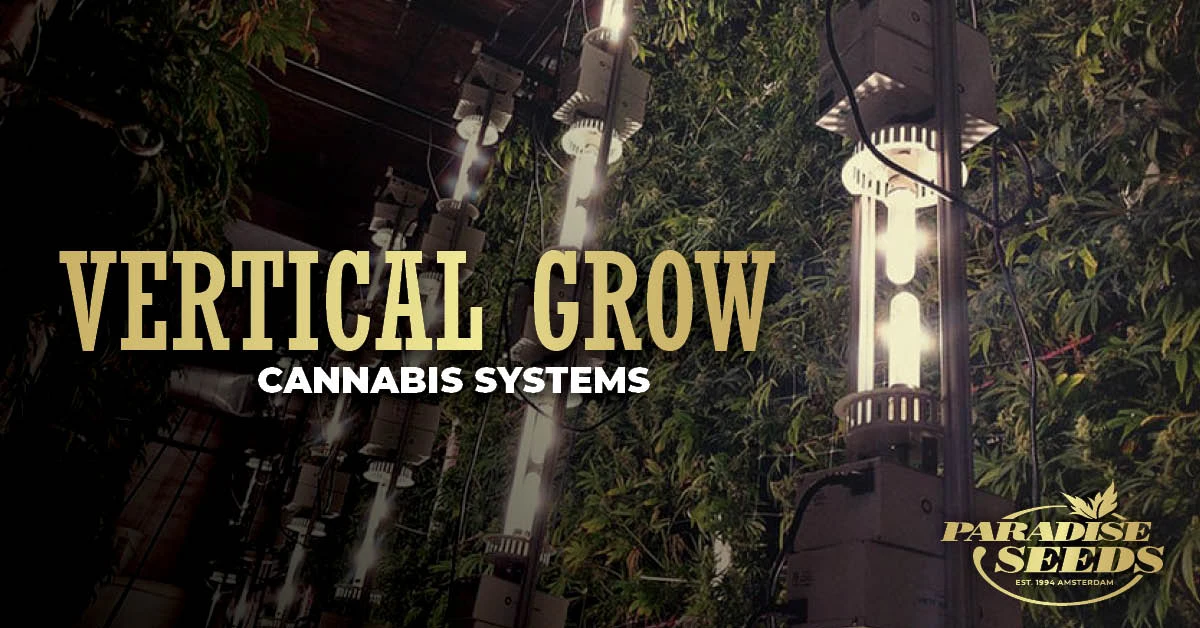Cannabis cultivation trends come and go, with few ever truly sticking. But one of the more recent shifts is the boom in vertical grow cannabis systems. The concept of indoor vertical farming isn’t anything new. The food sector, in particular, has been utilizing vertical grow systems for upwards of a decade at this point. Certain types of fresh produce (leafy greens in particular, but most vegetables do well) flourish under the conditions offered by vertical cultivation.
Thanks to huge leaps in tech in the past few years (especially with LED grow light dropping in price significantly, while also overtaking the traditional HID options in terms of performance), we are finally at a point where vertical cultivation in cannabis farming is truly starting to make sense. With a bunch of lighting firms releasing ready-to-go vertical rigs, and a handful of mega-farms (such as MedMen and Yellow Dream Farm) joining the cause, it seems that vertical cannabis farming is here to stay.
 Vertical grow cannabis systems: Stacked Vertical
Vertical grow cannabis systems: Stacked Vertical
This is, by far, the more common of the two main styles of cannabis farming is vertical cultivation , and the one used in the vast majority of large-scale farms. To implement this system, multiple cultivation tables are placed on top of each other, with each table having its own set of lights, fans, etc. The most obvious advantage of this method is that you can grow a lot more cannabis in the same footprint as a traditional horizontal cannabis farm layout. Plants grown using the stacked vertical cannabis grow system are usually topped multiple times, heavily defoliated, and tied down to help them fit into the required vertical space and to help with bud density.
Vertical grow cannabis systems: True Vertical
This style of cannabis grow system is a bit more complicated and is, as of now, only used by a handful of commercial operations. Instead of having tables with multiple grow spaces on top of each other, True Vertical uses a single long vertical PVC pipe “canvas” (usually made from some kind of breathable fabric) that cannabis plants are grown up. These plants are then fed, watered, and lit from the bottom up, with the entire rig being moved up as the plants grow. The advantage of this method is that you can pack in a whole lot more plants per square foot, but it is also a lot more complicated (and expensive) to set up and maintain.
It’s important to note that both of these methods are used indoors under controlled conditions. There are also outdoor versions of both, but that is a topic for another article.
Pros of vertical grow cannabis systems
Increased yields and better quality buds
This is the number one reason that people switch to a vertical cannabis grow system – you can grow a whole lot more weed with this method. When done correctly, you can increase your yields by as much as 50% or even more, which is huge for commercial growers. Thanks to the close proximity of the plants to each other and the ability to better control the environment, vertical farms tend to produce weed with tighter internodal spacing and denser flowers. This also comes down to the advances in LED tech over the past 3 or so years.
Cons of vertical grow cannabis systems
Increased Upfront Costs and Complicated Infrastructure
The biggest downside to vertical farming is the increased upfront costs. While you will save money on things like water, electricity, and nutrients in the long run, the initial investment will be high. You will need to factor in the cost of lights, fans, ducting, controllers, and the actual vertical rig itself.
Vertical farming also needs complicated infrastructure to make it all work. You will need a way to get water and nutrients to each plant, as well as a way to remove excess heat and humidity. This can be quite tricky (and expensive) to set up, especially if you are starting from scratch.
Vertical grow cannabis systems for home growers
For the average home grower, the increased upfront costs and complicated infrastructure just aren’t worth it. You are better off sticking to more traditional growing methods and variations such as SOG and SCROG, unless you have a specific reason for wanting to try vertical farming (like limited space).
But if you have already maxed out your grow space and have a good amount of experience, go for it! Just keep in mind that it’s always best to start simple. A two-tier stacked system is a great starting point.


